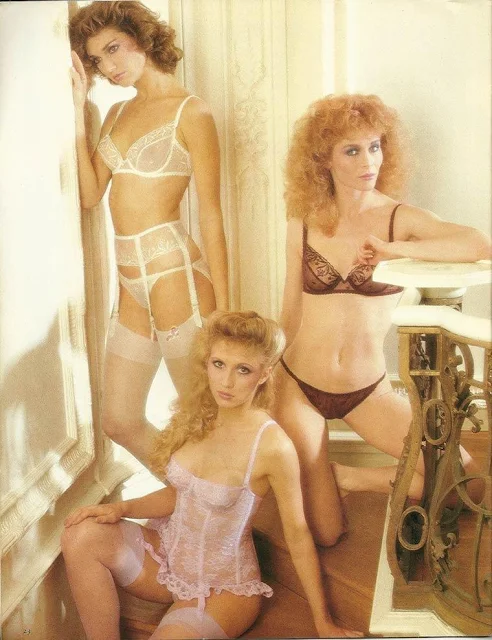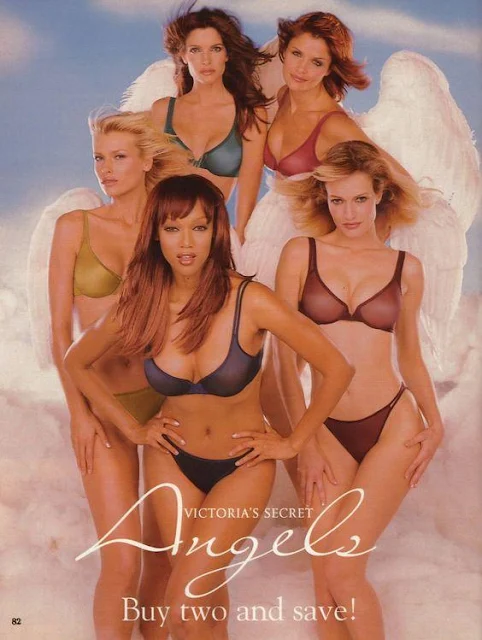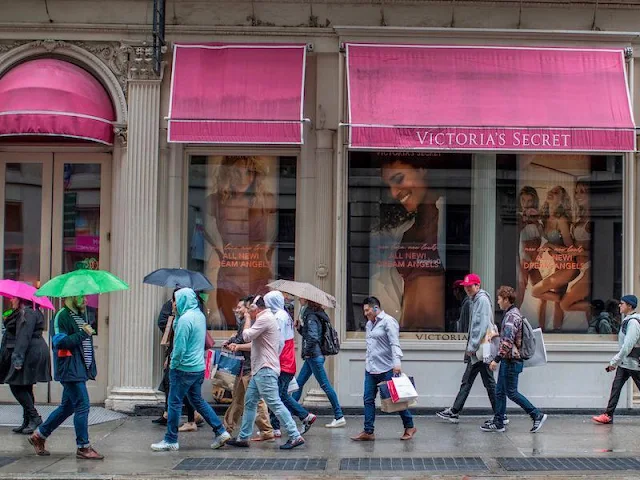The rise and fall of Victoria's Secret, the world's most famous lingerie brand: why it has lost so much popularity
- Victoria's Secret is the world's largest lingerie retailer, and has been for several decades.
- But after achieving explosive success in the late 90s and 2000s, the brand has struggled in recent years and has clearly seen how it has lost great art of its relevance.
- Now, he has also announced that he cancels his iconic annual fashion show.
- This is the story of the rise - and most recent fall - of the world's most famous lingerie brand.
- Discover more stories in Business Insider Spain.
- Since the late 1990s, Victoria's Secret has been one of the best known brands and that caused more expectation every time it did something, no matter what.
The brand has played an important role in defining what is sexy today through its bold lingerie and catwalk parades. At its best, this allowed the company to reach box office sales and acquire global status.
But more and more, the tide seems to be changing. Sales have fallen, customers complain that quality has declined, and analysts become more skeptical about their future if they refuse to adapt in an era of #MeToo.
Now, he has announced that he cancels his annual fashion show due to the drop in sales and the #MeToo movement.
Below you will find more information on how the company has achieved success and how it has recently stumbled:
Victoria's Secret was founded in 1977 by American businessman Roy Raymond.
Inspired by an awkward trip to a department store to buy underwear for his wife, Raymond set out to create a place where men felt calm buying lingerie. I wanted to create a women's underwear store aimed at the male sector.
He called the brand thus in honor of the Victorian era in England, wanting to evoke the delicacy of this era in his lingerie.
His vision was summed up by Naomi Barr de Slate in 2013: "Raymond imagined a Victorian dressing table, full of dark wood, oriental carpets and silk cloths. He chose the name 'Victoria' to evoke the decency and respectability associated with the Victorian era; outwardly refined, Victoria's 'secrets' were hidden underneath. "
He then opened several Victoria's Secret stores and launched his famous catalog.
By 1982, the company entered more than 4 million dollars in annual sales but, according to reports, was about to declare bankruptcy at that time. It was at that moment that Les Wexner pounced on us.
Wexner, who founded L Brands (formerly Limited Brands), was already making a name for himself in the world of retail as he built an impressive empire.
In June 1982, The Limited - which had previously acquired Express and Lane Bryant - was listed on the New York Stock Exchange. A month later, under Wexner's leadership, the company acquired the six stores and the Victoria's Secret catalog for one million dollars.
Wexner turned Raymond's vision around, creating a store that focused on women rather than men.
I was closely following the European lingerie market of the time and wanted to bring this aesthetic to the United States. So he set out to create a more affordable version of the European luxury brand "La Perla" - lingerie that looked luxurious and expensive but was affordable.
And it worked. By the early 1990s, Victoria's Secret had become the largest lingerie retailer in the United States, with 350 stores nationwide and sales exceeding one billion dollars.
The brand began to consolidate its image in the following years. In 1995, his famous annual fashion show was born.
The show, directed by Ed Razek (now marketing director of L Brands), became an icon of the brand's image.
Razek and his team were responsible for choosing the models that were to guide the show. Because of this, he became one of the most important people in the modeling world, helping to launch the careers of Gisele Bündchen, Tyra Banks and Heidi Klum.
In 1999, the program was first broadcast online. Time described it as the "moment of Internet breakup" of this era after 1.5 million viewers tried to tune in and blocked the site.
Meanwhile, the brand was also launching some of its best-known and most successful products, including its Miracle Bra and Body by Victoria padded bra.
Body by Victoria was a "blockbuster" and more than doubled the sales volume of any other bra Victoria's Secret had previously launched, Michael Silverstein wrote in his book, "Trading Up."
Around this time (1997), the idea of Victoria's Secret's "Angel" emerged after a commercial with Helena Christensen, Karen Mulder, Daniela Peštová, Stephanie Seymour and Tyra Banks was presented to promote their "Angels" underwear collection.
https://youtu.be/Z4pl6H9uPCw
https://youtu.be/Z4pl6H9uPCw
From then on, the term "Angel" becomes synonymous with the brand.
His shows became increasingly luxurious. In 2000, the model Gisele Bündchen toured the catwalk with what was then the most expensive lingerie item ever created, a "Fantasy Bra" inlaid with diamonds and rubies of 15 million dollars.
It is tradition that angels carry a "Fantasy Bra" on all the catwalks since 1996. These change every year.
In the year 2000, Sharen Jester Turney became CEO of Victoria's Secret Direct, leading her catalog business.
According to the articles of the time, Turney wanted to remove the "prostitute looks" from the catalog and made the aesthetic more like Vogue's than Playboy's.
He became CEO of the entire brand in 2006. Under his nine-year term, the company prospered; Sales increased 70% to $ 7.7 billion.
Wexner made a series of quick changes: remove the catalog, swimsuits and clothing to focus solely on lingerie, the central part of your business.
He also divided the brand into three - Victoria's Secret Lingerie, Victoria's Secret Beauty and Pink - and recruited a CEO for each division.
Victoria's Secret was slow to adapt to a change of padded bras and padded bracelets and sports bras, thus losing an important fashion trend.
Victoria's Secret was accused of not adapting to the times.
Between 2016 and 2018, its market share in the United States fell from 33% to 24%. Some buyers complained that the quality of their underwear had been neglected.
One of its biggest assets, the Pink brand, focused on teenage girls, also began to resent. Sales fell, and large discounts were used to attract buyers.
"We believe that Pink is on the verge of collapse," Jefferies analyst Randal Konik wrote in a note to investors in March 2018, commenting on the level of promotions in the store.
Some parents complained that Pink was being rejected by Victoria's Secret's sexualized ads.
His annual fashion show attracted criticism for being outdated, and the audience fell apart. In November 2018, Razek highlighted in a scandal on the Internet after making controversial comments about transgender and plus size models.
Razek said in an interview with Vogue that he didn't think his show had to include "transsexuals" because this is a "fantasy." "It's a 42-minute entertainment special. That's what it is," he said.
Razek formally apologized for the Internet, but some of his critics said he should have quit.
The company's former executives told Business Insider that it was not about Razek resigning his post, since he is "untouchable" in Wexner's eyes and has full control over the brand image.
Mehas has a difficult job, analysts say. Sales in the same Victoria's Secret stores fell 3% in 2018, and is gradually losing market share against new businesses.
In addition, it has angry shareholders to deal with. In March, activist shareholder Barington Capital sent a letter to Wexner, in which recommendations are made to improve the growth of Victoria's Secret in order to "unlock substantial value."
In the letter, Barington CEO James A. Mitarotonda said the company's brand image was "outdated."
"The brand image of Victoria's Secret is beginning to look outdated and even a little deaf when not being aligned with the evolution of women's attitudes towards beauty, diversity and inclusion," he wrote.
Barington highlighted the lack of diversity on its board of directors as a problem for the brand. Of the 12 board members, nine are men.
And it seems that Victoria's Secret has taken this criticism very seriously. Although he acknowledged the letter in a statement, he has also actively sought to replace three board members to make them more diverse, according to The Wall Street Journal.
In March, fans praised the company for its decision to take Hungarian model Barbara Palvin as one of its most recent angels.
Although it is not a large model, Instagram users celebrated a publication starring Palvin for being more inclusive with the canons of beauty, as they considered it with more curves than some of the other models of the brand.
"This model seems healthy and I love it," wrote an Instagram user.
"Finally! A true human body," said another.
"In the future we do not believe that network television is adequate. In 2019 and beyond, we are focusing on the development of exciting and dynamic content and a new type of event, delivered to our clients on platforms to which they are stuck together ... and in ways that will push the boundaries of fashion in the global digital era, "said L Brands chief executive Les Wexner a few days ago in a press release, according to the CNBC television network.
Just 3 days ago, Victoria's Secret model, Shanina Shaik, claimed that the annual fashion show of the lingerie brand would not take place this year. The 28-year-old told the Australian Daily Telegraph that the 2019 fashion event had been canceled, but believed that the parade could return in the future.





























